- Home
- James Axler
Doom Helix Page 10
Doom Helix Read online
Page 10
The baron paused beside one of the wooden crates lined up on the ground. He knelt and after rummaging in the packing straw, came up with a rag-wrapped object about a foot long. He stripped off the protective covering, and proudly shoved the thing in Ryan’s face.
It was a short length of two-inch diameter, steel cylinder, threaded and capped at both ends, with a drilled-out fuse hole. Pipe bomb.
Ryan looked around. There were boxes and boxes of them.
“On my birth world,” the baron said, “I learned a good deal about the manufacture of explosives.” As he weighed the crude bomb in his palm, that unholy light returned to his eyes. “And about blowing things up.”
Chapter Eight
Clad in a helmeted battlesuit, Dr. Huth stood hunched over a makeshift work table, his attention riveted on a monitor and the pair of side-by-side videos displayed there.
Both were of death by fire.
Moving the computer scroller with a gauntleted hand, he compared the same fractions of seconds of recorded time. There was a slight delay as the software interface corrected the blur, interpolating missing pixels.
The recording on the right captured the slaughter of a specter-free stickie, a creature he had sacrificed in order to get baseline, species-normal, biometric values as it expired. An array of remote sensors and cameras had chronicled the physiological effects of immolation. The sequences ended in full-frame whiteouts of total ignition.
On the left were the death throes of a mutant that Dr. Huth had infected with the specters’ microscopic seeds. Moments before the entities had burst out of the stickie’s bloated torso, he had incinerated it to ash. Again, the sensors had recorded the event in great detail: metabolism values, heart rate, blood pressure, oxygen saturation, kidney and liver function, brain wave output.
As Dr. Huth shifted the controller, moving back and forth between the last instant of life and the precise moment of death, the numerics of the on-screen bio-readouts scrolled up, then plummeted down. Up and down. Up and down. The crawl-speed playback distorted the stickies’ final screams, turning ear-splitting shrieks into baritone bellows of pain.
Even though the cries were garbled in pitch and muffled by distance and force field, they still had the power to agitate his other test subjects. A faint chorus of sympathetic wails and moans echoed up from the bowels of the mine shaft.
When Dr. Huth’s side-by-side comparison of the readouts revealed no significant differences, right up to the millisecond of termination, he quickly switched computer programs from biometrics to biomass analysis. The spectrographic software detected radiation wavelengths given off by burning materials. From what burned, how brightly, and for how long, it measured bodily raw materials in percentiles.
He blinked at the screen. The spectrographs of both immolations were virtually identical, peak for peak, valley for valley.
It appeared that the specters, right up to the very instant of their breaking out, had taken nothing whatsoever from their victim.
Which was impossible according to the Law of Conservation of Matter.
To grow from microscopic size to more than six feet long, a living creature had to intake and process vast quantities of raw material.
Dr. Huth wanted to rub his aching eyes, but he couldn’t because of the battlesuit helmet’s face plate. He felt hollow and fluttery at his very core; exhausted not only by twenty-four-hour cycles of nonstop effort, or the confines of the battlesuit he had been forced to live in for weeks, but also by the lack of concrete results and the rapidly closing time window. Every line of inquiry he had tried so far had been for naught. It suddenly seemed possible, even likely, that this was the one question he couldn’t dent, that he finally come to the limits of his intellectual powers, of his genius for invention and synthesis.
The whitecoat shut his eyes and took a series of deep, slow, restorative breaths. As he did so, his lips began to move. Softly, but distinctly, he repeated the mantra that in the face of defeat had always sustained him: “I am a problem solver. I am a problem solver. I am a problem solver.”
Gradually, over the course of several minutes of intense concentration, the self-reprogramming took effect, driving out the negative, counterproductive thoughts. Dr. Huth regained his composure and mental focus.
Without a doubt, he assured himself, this was the scale of problem he had been born to take on. And he had a long track record of success with similar, apparently hopeless challenges. When his overpopulated Earth was on the verge of running out of food, he had helped to develop a strain of energy-rich agrobacteria that, had it ever been industrially cultivated, might have saved billions upon billions of lives. It wasn’t his fault that in the rush to put the new technology in place the cyanospores had been accidently released into the environment, where they multiplied out of control, eventually smothering large underground sections of the megalopolis in green slunk.
As catastrophic and disappointing as that outcome had been, Dr. Huth hadn’t given up the search for an answer. He had been one of the first researchers to see the potential of converting inorganic rock, a virtually inexhaustible resource, into a form that could be partially digested by, and which would sustain, living creatures. That prolonged consumption of the synthetic fast food drove human beings homicidally insane was an unforeseen—but in his view completely acceptable—side effect. It was a matter for law enforcement and the military to deal with. As far as Dr. Huth was concerned, he had elegantly solved his earth’s mass starvation problem.
Twice.
As he stared, his eyes unfocused, at the stop-action images of incineration, he had an “Aha!” moment. In an instant of clarity the experimental design’s fatal flaw revealed itself to him. Up to this point he had been splitting hairs with the lives of his test subjects, shaving away the milliseconds between life and death, initiating termination closer and closer to the moment of breakout. This was done in order to test the hypothesis that in the interval prior to their hatching, the specters were harvesting resources from their host.
The potential error was in the experiment’s artificial limits, which eliminated the prospect of the specters’ release into the environment, but didn’t allow a complete testing of the hypothesis. It was still possible that the entities were taking something from their victims, just not in the time frame and under the circumstances allowed by the experiment. As things stood, Dr. Huth was the one doing the killing, triggering the incineration before the entities could burst out. If the specters were harvesting from the host at the precise instant of death, or immediately thereafter, the current experimental design wouldn’t catch it. It was also conceivable that the specters had to actually cause the death themselves in order to take their bounty.
The next logical step was dire, indeed.
At least one clutch of specters had to be allowed to come to full term under laboratory conditions, allowed to break out of and kill their mutant host. Remote sensors would record the biometrics of the slaughter, and the burning of the stickie’s corpse would yield critical spectrographic data.
The risk involved was off the scale.
Although specters weren’t able to penetrate a laboratory cell’s force field or pass through the solid nukeglass walls, floor or ceiling, once they exited their host, there was still no way to kill them—at least not that Dr. Huth had discovered. And if for some reason they managed to escape the confines of the cell and the site’s deepest mine shaft, if they reached the open space of Deathlands, they would divide endlessly, and swarm by the millions upon the animal life of this world, eventually driving it to extinction. The human slaves at Ground Zero would be the first to die, and when that happened there would be no work force to gather nuke ore for reprocessing.
Dr. Huth and the she-hes would be forced to jump worlds again and quickly, with whatever energy they had stored.
From past experience, the odds of finding another hospitable Earth, or a replica planet with the resources necessary to repower their jump batteries were slim.<
br />
So far, it appeared that the X-ray treatments he had initiated on the twelfth Earth had eliminated the spore contamination. If it had spread from encystations inadvertently brought along with them, the mine slaves, who weren’t protected by battlesuits, should have already been showing signs of infestation. Barring a documented loss of specter containment, which meant the she-hes had nothing left to lose, Auriel Otis Trask wasn’t likely to give him permission for a laboratory-controlled hatching out.
Dr. Huth grinned to himself, grizzle-chinned and gap-toothed.
Accidents did happen, of course.
And a full-blown disaster always had the potential of being a great learning opportunity.
An opportunity that might never come again.
If an accidental release occurred, he would have the chance to study the specters in close captivity, to test their reactions, gauging not just their physical properties, but their behavior. Even if there was no evidence of extracted host material inside the specters, no evidence of specters’ organs or bodily functions, there was certainly evidence of what seemed to be organized activity on their part—the simultaneous expansion of volume within the host, a combined outward pressure leading to their bursting free of the torso; subsequent coordinated attacks on their victims and, afterward, the mass, aerial swarming.
The attacks, posthatching, had always followed the same pattern. The specters were able to change their shape, to draw themselves out into the thinnest of threads. In this superelongated state, they entered their victims through any available orifice, pouring into ears or nose, eyes, rectum or mouth. When one of them gained entry, others nearby seemed to home in on the struggling quarry, penetrating it in the same way by the dozens, a flood tide of invaders, whose substance was invisible to the naked eye. Once inside the host, they expanded in volume until the combined hydraulic pressure literally blew the victim apart. Instead of death occurring in a matter of weeks, as was the case in the infestation process, this killing took only seconds. And when it was done, the entities javelined off in search of new lives to steal.
At least superficially, it seemed some kind of communication had to be at work.
The other viable explanations for the apparent group phenomena—chemical, magnetic, electrical—needed to be closely examined and eliminated from the equation. Dr. Huth reasoned that an analysis of the specters’ behavior—if it was behavior—might provide him a window into what they were, and how they could be destroyed.
Their reproductive cycle was another mystery that had him thoroughly stumped. From a distance, the aerial swarming behavior they exhibited looked like mating, but he had found no evidence that specters produced spores. They increased their numbers after hatching not by sexual reproduction, but by simple division. Which left open the question: What had created the spores? And what was its relationship to the specters?
Dr. Huth caught himself.
His mind was racing in circles.
And he was holding his breath.
He forced himself to exhale slowly, and with an effort, once again managed to clear his thoughts. He faced a complex knot of problems, all of them intimately, perhaps functionally, related. He had to focus on one tightly defined issue at a time, or end up chasing his own tail.
He shut off the computer program and returned the screen to the live feed from aboveground cameras that randomly scanned all of Ground Zero. Moving under the roughhewn ceiling of gray-green nukeglass to the opposite side of the lab, he stepped over the sheaf of power cables that led from a nuke generator to the row of electronics and banks of lights. Rummaging around on a littered sawhorse table, he picked up his hand scanner, then exited the doorless cell.
When his battlehelmet’s headlamp swept over the corridor’s walls, embedded debris glittered back at him. The millions of occlusions were metallic, fragments of a lost civilization caught up in the matrix like bugs in amber—pull tabs, rivets, washers, crushed aluminum cans. They were objects that the extreme high temperatures of nuclear fission couldn’t melt or evaporate. Buried deeper in the nukeglass glacier, at the far edge of the headlamp’s penetration, were the hulking shadows of larger, unidentifiable objects.
As he trudged through the drifts of sparkling dust on the floor of the tunnel, the ultrafine material swirled upward, around his knees. When inhaled, the glass dust acted like micro-razors. Since it was highly radioactive as well, it was a toss-up whether the mine slaves would die of shredded lungs or rad poisoning.
Dr. Huth was protected from dust and radiation by his artificially intelligent battle armor, but there were downsides to wearing it for extended periods. Despite the formfitting, bodystocking cushion he wore under the plasteel plates, weeping sores had appeared at the hinge and pressure points. No matter how carefully he walked, the accumulated scabs tore loose from knees, elbows and shoulders. To ward off infection he had to dose himself with antibiotic four times daily. Because of the suit’s inexact fit and his inability to fully interface with the controls involved in feeding and excretion, the stench he wallowed in was oppressive.
Exposed nerve ends burning at his every step, Dr. Huth started down a ramp at the end of the passage. The thirty-degree incline persisted for fifty yards, then the corridor took a hard right turn, and began to spiral downward at a much steeper pitch. Texture had been laser-cut into the floor to grip boot soles and cart wheels.
As he corkscrewed deeper and deeper into the massif, he could make out a dim light below. As he descended, the glow grew brighter and the external temperature steadily climbed. When he reached the spiral’s bottom and the entrance to yet another horizontal corridor, his visor’s temp sensor read 135 degrees Fahrenheit. Sheathed in the climate-controlled armor, he didn’t notice it.
Just inside the shaft’s entrance, harshly illuminated by a string of floodlights that ran along join of floor and walls, the ceiling was marked by row upon row of three-inch-wide bore holes. Each of the bore holes was packed with a powerful explosive charge. A spiderweb of drooping wires connected the charges, ensuring simultaneous detonations. An identical bank of explosives had been set on the far side of the clustered lab cells. They were the experiment’s fail-safe. A breakdown or breach of the force fields blocking the cell entrances would automatically trigger a massive double blast, dropping thousands of tons of nukeglass, sealing off the shaft at both ends.
Because the specters could stretch themselves into thin filaments, sooner or later, like curls of smoke, they would find a route up through the cracks and fissures to the surface. The mile-deep deadfall wasn’t a permanent solution to a loss of containment; it was a delaying tactic that bought the she-hes and Dr. Huth time to make good an escape.
This corridor was even grimmer and grittier than the one above: the ceiling a low arch, the walls narrow. It reminded Huth of an animal’s burrow. The tunnel stretched off into the distance; past the floor lights, past the force field barrier on the far side of the cells, it disappeared into the bowels of the glacier. Overhead, the sheer volume of the massif was a constant, crushing presence.
It was the darkest, deepest of dark, deep places. And it was blistering hot. Hot as the lowest pit of hell.
Dr. Huth passed by the nuke generators that powered the force-field, illumination and fail-safe systems. When his body moved in front of the string of floodlights, it cast flickering shadows over the entrances to the cells carved into the left-hand wall. The stickies imprisoned inside began to moan.
He strode past the first half-dozen cells. The naked occupants tried their best to make themselves invisible, cowering in the farthest corners. The cells were all the same: bare walls and floor; no bed; white plastic, five-gallon buckets for toilet, water and food. The only other furnishings were the incineration apparatus along one wall and a foot-wide silver dome mounted in the center of the ceiling that held the vid cams and a remote-controlled, wireless stun unit. The rotating dome had a 360-degree sweep of the entire cell. Test subjects were forcibly confined by its robotic stun gun, allowing
their safe feeding and watering.
Dr. Huth stopped in front of the seventh cell. On the floor against the rear wall, a pale creature lay curled in a tight ball behind the latrine bucket, its backside facing the entrance. Stickie Number Seven appeared to be the one closest to specter breakout, the prime candidate for an “accident.” Dr. Huth shifted his visor to infrared mode and pointed the hand scanner. Blood pressure, body temperature, respirations all registered, but because of the bucket and subject’s body position he couldn’t see inside the torso.
He turned on his battlesuit’s loud-hailer and cranked up the volume. “Get up!” he bellowed at the creature.
The command echoed down the shaft.
Raising its bald head an inch or two, the stickie peered up at him from behind a spindly forearm. Dr. Huth noted the bloody sucker fingers, torn to shreds trying to scratch through the nukeglass. The stickie knew what was coming; by now, they all did. It raised its head higher, the black eyes begging for mercy.
Mercy was out of the question.
Dr. Huth reached for the switches set in the tunnel wall. This time he ignored the covered toggle and pressed the button with his thumb.
The ceiling’s dome rotated sixty degrees, then stopped. A blue arc of high voltage, a mini-lightning bolt snapped from the dome to the creature huddled on the floor. The stickie screamed and jerked like it had been lashed with a whip, but it didn’t rise. It curled into an even tighter ball, hiding its head under its arms.
Dr. Huth pushed the button again and held it down. Another blue bolt slammed the mutant. Then another.
The third time was a charm.
The creature sprang to its feet, howling in pain as it hopped wildly from one foot to another. Though decidedly male, it looked nine months pregnant. The massively protruding belly didn’t bounce or quiver as the mutant jiggered about, but stuck out rigidly, like it was inflated with high pressure air. The stickie’s cries set the other captives shrieking in their cells.

 End Program
End Program Nemesis
Nemesis Terminal White
Terminal White Homeward Bound d-5
Homeward Bound d-5 Blood Harvest (v5)
Blood Harvest (v5)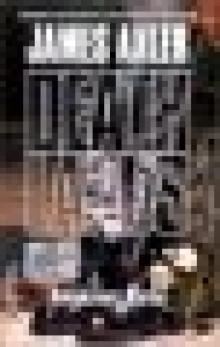 Amazon Gate
Amazon Gate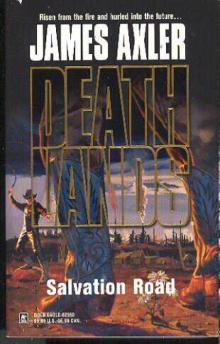 Salvation Road
Salvation Road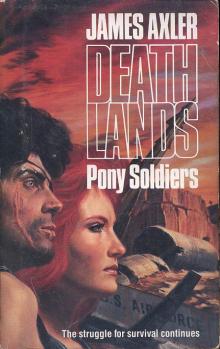 Pony Soldiers
Pony Soldiers Blood Harvest
Blood Harvest Atlantis Reprise
Atlantis Reprise Necropolis
Necropolis Haven's Blight
Haven's Blight Dragon City
Dragon City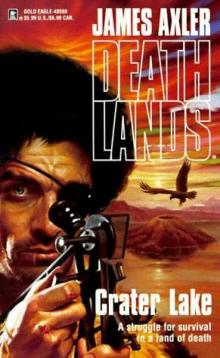 Crater Lake
Crater Lake Storm Breakers
Storm Breakers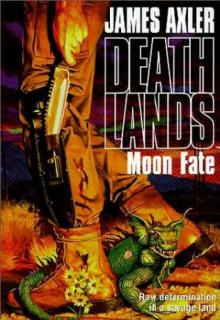 Moon Fate
Moon Fate Eden’s Twilight
Eden’s Twilight Savage Armada
Savage Armada Desolation Crossing
Desolation Crossing Time Nomads
Time Nomads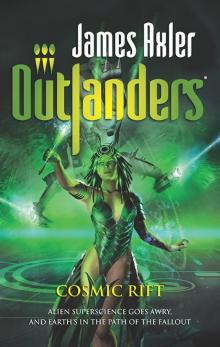 Cosmic Rift
Cosmic Rift Sins of Honor
Sins of Honor Distortion Offensive
Distortion Offensive Arcadian's Asylum
Arcadian's Asylum Black Harvest
Black Harvest Iron Rage
Iron Rage Nightmare Passage
Nightmare Passage Labyrinth
Labyrinth Child of Slaughter
Child of Slaughter Cannibal Moon
Cannibal Moon Tainted Cascade
Tainted Cascade Ritual Chill
Ritual Chill Sunchild
Sunchild Wretched Earth
Wretched Earth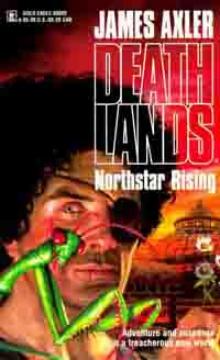 Northstar Rising d-10
Northstar Rising d-10 Damnation Road Show
Damnation Road Show Hanging Judge
Hanging Judge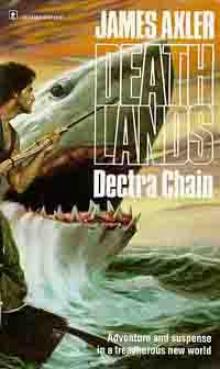 Dectra Chain d-7
Dectra Chain d-7 Iceblood
Iceblood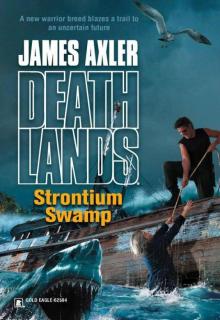 Deathlands 074: Strontium Swamp
Deathlands 074: Strontium Swamp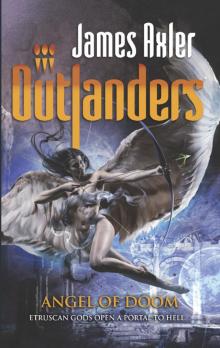 Angel of Doom
Angel of Doom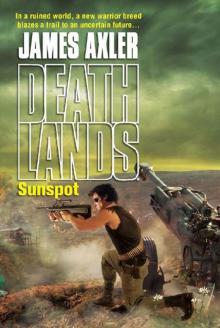 Sunspot
Sunspot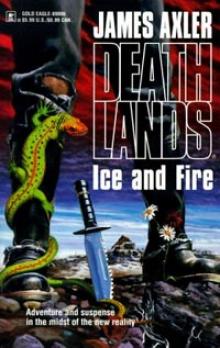 Ice and Fire d-8
Ice and Fire d-8 Pilgrimage to Hell d-1
Pilgrimage to Hell d-1 Wings of Death
Wings of Death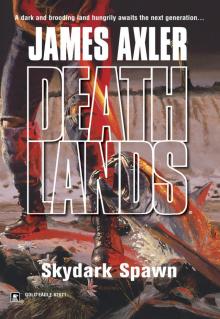 Skydark Spawn
Skydark Spawn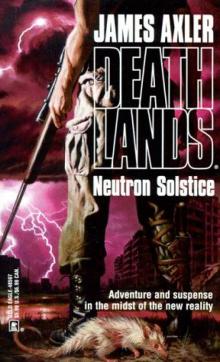 Neutron Solstice d-3
Neutron Solstice d-3 Deathlands 067: Death Hunt
Deathlands 067: Death Hunt Pilgrimage to Hell
Pilgrimage to Hell Siren Song
Siren Song Perdition Valley
Perdition Valley Dark Fathoms
Dark Fathoms Remember Tomorrow
Remember Tomorrow Crucible of Time
Crucible of Time Savage Armada - Deathlands 53
Savage Armada - Deathlands 53 Judas Strike - Deathlands 54
Judas Strike - Deathlands 54 End Day
End Day Dark Resurrection
Dark Resurrection Deathlands - The Twilight Children
Deathlands - The Twilight Children Deathlands 068: Shaking Earth
Deathlands 068: Shaking Earth Breakthrough
Breakthrough Death Hunt
Death Hunt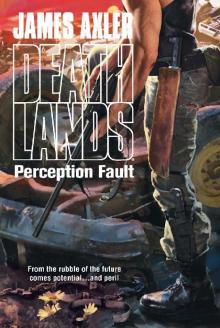 Perception Fault
Perception Fault Red Equinox
Red Equinox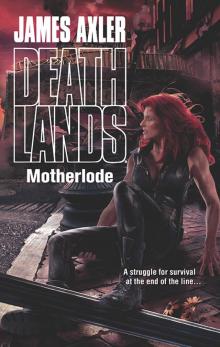 Motherlode
Motherlode Deathlands 071: Ritual Chill
Deathlands 071: Ritual Chill Hell Road Warriors
Hell Road Warriors Downrigger Drift
Downrigger Drift Gaia's Demise
Gaia's Demise Hell's Maw
Hell's Maw Devil's Vortex
Devil's Vortex Prodigal's Return
Prodigal's Return Deathlands 122: Forbidden Trespass
Deathlands 122: Forbidden Trespass Scarlet Dream
Scarlet Dream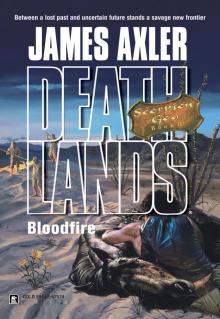 Bloodfire
Bloodfire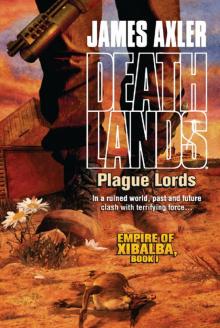 Plague Lords (Empire of Xibalba, #1)
Plague Lords (Empire of Xibalba, #1) Moonfeast
Moonfeast Latitude Zero
Latitude Zero Lost Gates
Lost Gates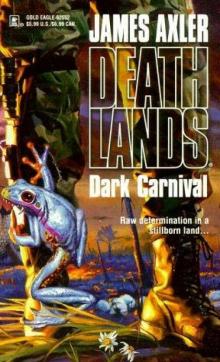 Dark Carnival
Dark Carnival Crimson Waters
Crimson Waters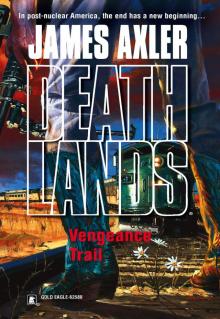 Vengeance Trail
Vengeance Trail Apocalypse Unborn
Apocalypse Unborn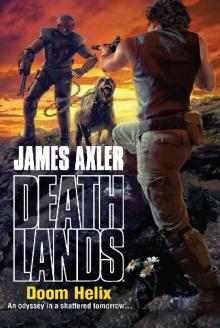 Doom Helix
Doom Helix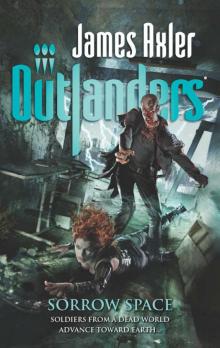 Sorrow Space
Sorrow Space Separation
Separation Northstar Rising
Northstar Rising Red Holocaust
Red Holocaust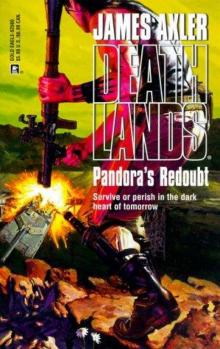 Pandora's Redoubt
Pandora's Redoubt Chill Factor
Chill Factor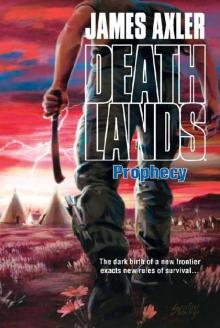 Prophecy
Prophecy Crater Lake d-4
Crater Lake d-4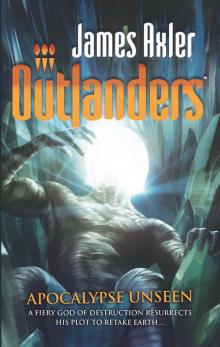 Apocalypse Unseen
Apocalypse Unseen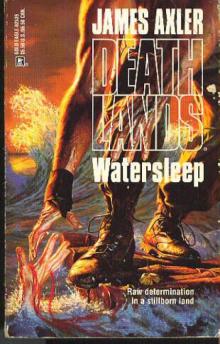 Watersleep
Watersleep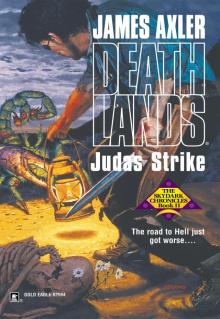 Judas Strike
Judas Strike Time Castaways
Time Castaways Baptism of Rage
Baptism of Rage Polestar Omega
Polestar Omega Red Holocaust d-2
Red Holocaust d-2 Outlanders 15 - Doom Dynasty
Outlanders 15 - Doom Dynasty Way of the Wolf
Way of the Wolf Deathlands 075: Shatter Zone
Deathlands 075: Shatter Zone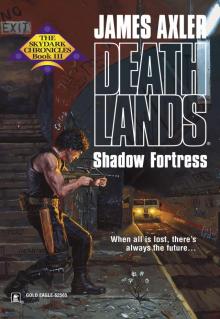 Shadow Fortress
Shadow Fortress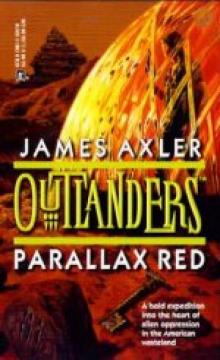 Outlander 05 - Parallax Red
Outlander 05 - Parallax Red Shaking Earth
Shaking Earth Playfair's Axiom
Playfair's Axiom Truth Engine
Truth Engine Homeward Bound
Homeward Bound Desert Kings
Desert Kings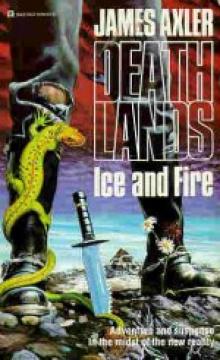 Ice and Fire
Ice and Fire Zero City
Zero City Palaces of Light
Palaces of Light No Man's Land
No Man's Land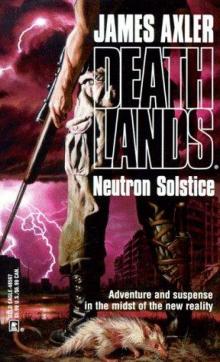 Neutron Solstice
Neutron Solstice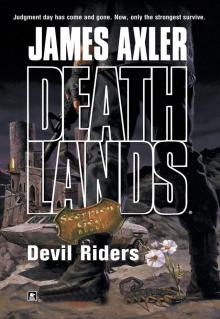 Devil Riders
Devil Riders Thunder Road
Thunder Road Deathlands 118: Blood Red Tide
Deathlands 118: Blood Red Tide Deathlands 114: Siren Song
Deathlands 114: Siren Song Reality Echo
Reality Echo Hive Invasion
Hive Invasion God War
God War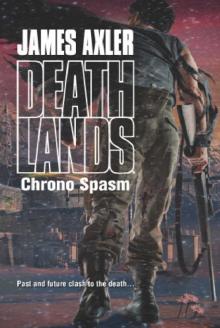 Chrono Spasm
Chrono Spasm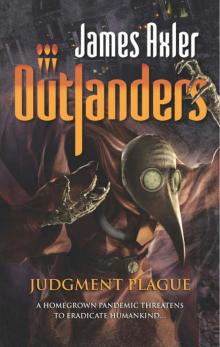 Judgment Plague
Judgment Plague Blood Red Tide
Blood Red Tide Dectra Chain
Dectra Chain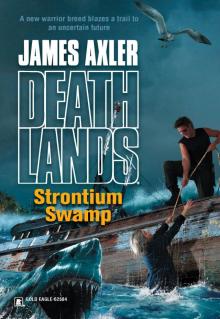 Strontium Swamp
Strontium Swamp Seedling
Seedling Shatter Zone
Shatter Zone Hellbenders
Hellbenders